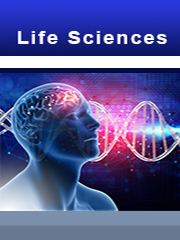Report overview
It is defined as the study of controlling, manipulating and creating systems based on their atomic or molecular specifications. As stated by the US National Science and Technology Council, the essence of nanotechnology is the ability to manipulate matters at atomic, molecular and supra-molecular levels for creation of newer structures and devices. Generally, this science deals with structures sized between 1 to 102 nanometer (nm) in at least one dimension and involves in modulation and fabrication of nanomaterials and nanodevices.
This report aims to provide a comprehensive presentation of the global market for Nanotechnology for Healthcare, with both quantitative and qualitative analysis, to help readers develop business/growth strategies, assess the market competitive situation, analyze their position in the current marketplace, and make informed business decisions regarding Nanotechnology for Healthcare. This report contains market size and forecasts of Nanotechnology for Healthcare in global, including the following market information:
Global Nanotechnology for Healthcare Market Revenue, 2018-2023, 2024-2029, ($ millions)
Global top five companies in 2022 (%)
The global Nanotechnology for Healthcare market was valued at US$ 211810 million in 2022 and is projected to reach US$ 259910 million by 2029, at a CAGR of 3.0% during the forecast period. The influence of COVID-19 and the Russia-Ukraine War were considered while estimating market sizes.
The industry is crowded with producers and fierce competition. The U.S. has the highest share of income by region, at more than 48 percent.The key manufacturers are Amgen, Teva Pharmaceuticals, Abbott, UCB, Roche, Celgene, Sanofi, Merck & Co, Biogen, Stryker, Gilead Sciences, Pfizer, 3M Company, Johnson & Johnson, Smith & Nephew, Leadiant Biosciences, Kyowa Hakko Kirin, Shire, Ipsen, Endo International etc. Top 3 companies occupied about 4% market share.
We surveyed the Nanotechnology for Healthcare companies, and industry experts on this industry, involving the revenue, demand, product type, recent developments and plans, industry trends, drivers, challenges, obstacles, and potential risks.
Total Market by Segment:
Global Nanotechnology for Healthcare Market, by Type, 2018-2023, 2024-2029 ($ millions)
Global Nanotechnology for Healthcare Market Segment Percentages, by Type, 2022 (%)
Nanomedicine
Nano Medical Devices
Nano Diagnosis
Other
Global Nanotechnology for Healthcare Market, by Application, 2018-2023, 2024-2029 ($ millions)
Global Nanotechnology for Healthcare Market Segment Percentages, by Application, 2022 (%)
Anticancer
CNS Product
Anti-infective
Other
Global Nanotechnology for Healthcare Market, By Region and Country, 2018-2023, 2024-2029 ($ Millions)
Global Nanotechnology for Healthcare Market Segment Percentages, By Region and Country, 2022 (%)
North America
US
Canada
Mexico
Europe
Germany
France
U.K.
Italy
Russia
Nordic Countries
Benelux
Rest of Europe
Asia
China
Japan
South Korea
Southeast Asia
India
Rest of Asia
South America
Brazil
Argentina
Rest of South America
Middle East & Africa
Turkey
Israel
Saudi Arabia
UAE
Rest of Middle East & Africa
Competitor Analysis
The report also provides analysis of leading market participants including:
Key companies Nanotechnology for Healthcare revenues in global market, 2018-2023 (estimated), ($ millions)
Key companies Nanotechnology for Healthcare revenues share in global market, 2022 (%)
Further, the report presents profiles of competitors in the market, key players include:
Amgen
Teva Pharmaceuticals
Abbott
UCB
Roche
Celgene
Sanofi
Merck & Co
Biogen
Stryker
Gilead Sciences
Pfizer
3M Company
Johnson & Johnson
Smith & Nephew
Leadiant Biosciences
Kyowa Hakko Kirin
Shire
Ipsen
Endo International
Outline of Major Chapters:
Chapter 1: Introduces the definition of Nanotechnology for Healthcare, market overview.
Chapter 2: Global Nanotechnology for Healthcare market size in revenue.
Chapter 3: Detailed analysis of Nanotechnology for Healthcare company competitive landscape, revenue and market share, latest development plan, merger, and acquisition information, etc.
Chapter 4: Provides the analysis of various market segments by type, covering the market size and development potential of each market segment, to help readers find the blue ocean market in different market segments.
Chapter 5: Provides the analysis of various market segments by application, covering the market size and development potential of each market segment, to help readers find the blue ocean market in different downstream markets.
Chapter 6: Sales of Nanotechnology for Healthcare in regional level and country level. It provides a quantitative analysis of the market size and development potential of each region and its main countries and introduces the market development, future development prospects, market space of each country in the world.
Chapter 7: Provides profiles of key players, introducing the basic situation of the main companies in the market in detail, including product sales, revenue, price, gross margin, product introduction, recent development, etc.
Chapter 8: The main points and conclusions of the report.
